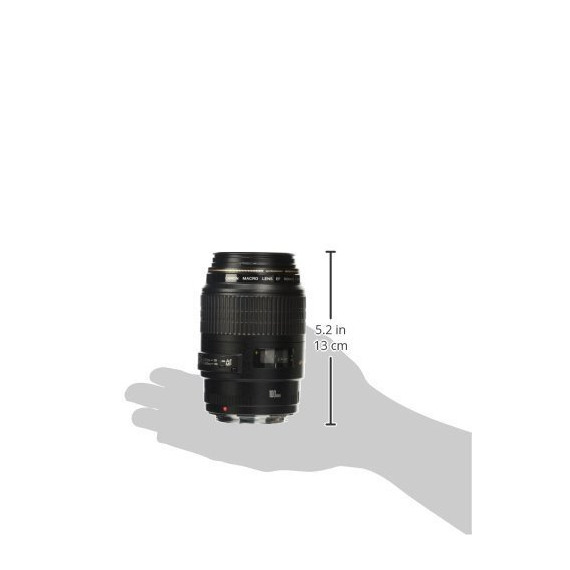L.J. Rhodes
This is by far one of the sharpest lenses on the market, even holding its own against the most expensive glass by Canon, Nikon and even Zeiss (which Nikon and Zeiss owners will foam at the mouth at hearing, but the results of shooting with this lens dont lie). Its also one of the most versatile, since its a true macro lens which does double- and even triple-duty as an incredible portrait lens and fast medium telephoto. The L version of this, which costs twice as much, really only brings optical image stabilization to the table, but its overall sharpness is, in practice, no better than this "regular" lens. Also, lens flare is so well controlled by this lens design that you can save your money on a lens hood. It has a second diaphragm in it that makes it nearly impossible to get flare without actually trying to, in which case you might be disappointed, since it really is hard to get flare even intentionally. This is an impressive feat of engineering on Canons part. Its also very fast to focus when the limiter switch is set to keep it out of the macro range. But, even when the limiter is turned off, it doesnt tend to hunt for focus except in low light or at extremely close distances. For low light, turn the focus limiter on, and you should have no problems. And, if youre shooting macro, its best to manually focus for that, anyway. And, again, I cant rave enough about how sharp this lens is. From edge to edge, details are tack sharp, and theres very little chromatic aberration. In fact, I dont think Ive ever used another lens that had such well-controlled color fringing, even wide open at f/2.8. Vignetting, though noticeable when the aperture is left wide-open, isnt as bad as other lenses, such as the 85mm f/1.8 (considerably more noticeable, but actually rather nice for portraits, which is what that lens is geared toward). On a full-frame sensor (or on 35mm film), it can give 1-to-1 reproduction, which means objects you shoot at its closest focusing distance will be the same size on the sensor that they are in real life. Imagine how much detail you could get in a print of a penny if its recorded image on film were the same size as the penny itself. Thats how macro lenses capture so much detail in small objects that our naked eye wouldnt be able to see. On APS-C sensor cameras, such as Rebels, the 60D, 70D, etc., it gives an effective reproduction of 2-to-1 (that is, 2x magnification), since APS-C sensors are only about half the size of full-frame. So, if you have a full-frame sensor and an APS-C sensor that both have the same resolution, you will have to crop the image from the APS-C sensor less than an image from a full-frame sensor to get the same overall apparent magnification. This will result in more detail in the APS-C sensors image. I got a Rebel to use specifically for macro work for this very reason, saving my 5D for portraiture and landscapes. Finally, this lens build is just plain solid. It feels sturdy, even with its plastic (though its high-quality plastic) barrel. It never ceases to feel great in your hand, no matter how many times you pick it up. I now find myself going back to my opening statement. This lens is incredible. Arguably one of the best all-around lenses ever created (and youd be hard-pressed to argue that its not). I never get bored with it, especially since macro photography opens up a whole new world. Youll be amazed at how exciting and interesting your back yard can be when you go on a safari in it with this lens. Throw in awesome portraits and great sports and other action shots, and its easy to justify its kind of hefty price. Im attaching a couple of portraits and macro shots I took with it.








